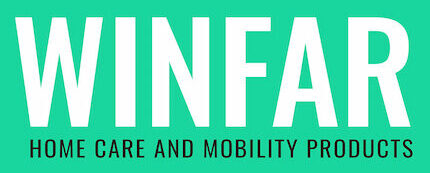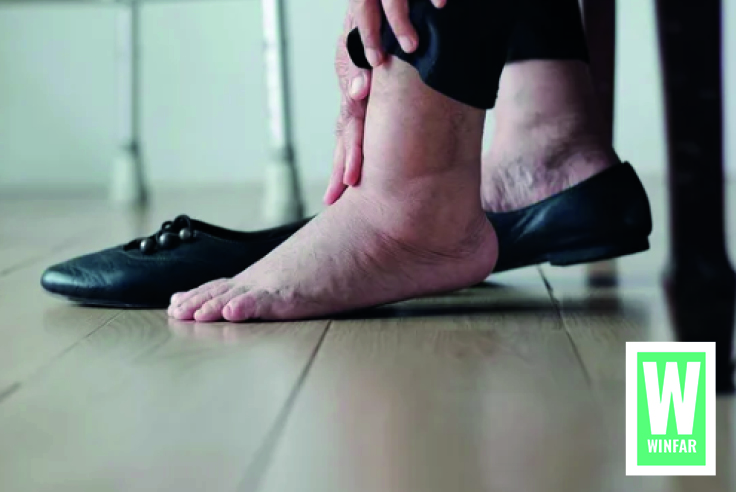It’s called Oedema. And it’s one of the most common problems and causes of discomfort amongst older adults. Swollen ankles and legs make moving around more difficult, increase fall risk and just generally make the lower body feel uncomfortable and heavy. So what causes Oedema? How about reducing the discomfort of Oedema? And what can you do to at the very least ease the discomfort. We share some useful and proven lifestyle changes which have had significant success, and 3 simple home exercises that are known to help get rid of swollen ankles, legs, and feet.
CAUSES OF SWOLLEN ANKLES IN SENIORS
Ankles, lower legs, and feet swell when the body retains fluid in the lower legs, ankles, and feet. That sounds simple enough. But, what makes Oedema so tricky, is the range of possible causes. Some of which are concerning indicators of deeper, more serious health issues.
For this reason, any conversation about Oedema must be prefixed with a warning. Please do not proceed to implement any of the suggestions below, without first consulting your doctor.
Oedema can be caused by a variety of different causes including:
– Inactive or sedentary lifestyle
– After surgery, when the body is healing
– Rheumatoid arthritis
– Vascular conditions
– Chronic kidney disease and
– Congestive heart failure and other heart conditions
Also, if the swelling only occurs on one side of the body, please contact a doctor immediately. That is often times an indicator of a blood, which would need immediate medical treatment.
LIFESTYLE CHANGES THAT REDUCE SWELLING
Depending on your underlying cause, as discussed with your doctor, potential solutions that can help reduce swelling include:
– Wearing compression socks or compression stockings.
– Making sure shoes aren’t too tight.
– Elevating the legs to allow gravity to help with circulation.
– Staying hydrated – it may sound counterintuitive, but dehydration can actually cause the body to retain more fluids.
– Eating more magnesium-rich foods like nuts, seeds, legumes, whole grains, and leafy greens.
– Increasing overall movement and exercise. If you sit or stand for long periods of time, even moving knees and flexing ankles can help.
– Limit intake of salt and carbohydrates.
– Epsom salt baths for 15-20 minutes – not scientifically proven, but many people say it’s effective.
– Losing excess weight.
HOW THESE SIMPLE EXERCISES REDUCE SWELLING?
We found some simple home exercises that basically work against gravity and help the body pump fluids up from the feet and back into the trunk (center area) of the body. Once the fluid is in the upper body, it can be processed by the kidneys and eliminated in urine.
Because these exercises help the body get rid of excess fluid, your older adult might need to use the bathroom more frequently.
BEFORE YOU START EXERCISING
Before starting any exercises, it’s essential to check with your doctor FIRST, to confirm the underlying cause, and get their approval to exercise the area.
Moving fluid out of the legs and into the centre of the body to be eliminated can put extra stress on their body, especially for people with heart or kidney conditions. So, its imperative you do a full check up first before you proceed.
3 SIMPLE HOME EXERCISES FOR SWOLLEN LEGS AND FEET
Famous Physical Therapists Bob Schrupp and Brad Heineck are physical therapists who demonstrate and explain how to do 3 simple home exercises that relieve swelling in legs and ankles. As with any exercise, it’s always best to start slowly and increase over time to prevent injuries or discomfort.
Exercise 1: Ankle pumps (1:28 in video)
– Lie down and elevate feet. Moving only the feet, point toes up toward the head and then point toes down away from head.
– Go back and forth and aim for 30 repetitions, 3 times a day.
It’s best to do this exercise while lying down, but it can also be done while seated.
To make them a little more effective while seated, use a stool to elevate the feet.
Exercise 2: Butt squeezes (3:17 min in video)
– While sitting or lying down, tighten the glutes (butt muscles) – as if trying to pick up a quarter that’s between the butt cheeks 🙂
– Go slowly and try to hold the squeeze for a few seconds, then release and relax for a few seconds before the next squeeze.
– While doing this exercise, make sure you don’t hold your breath. Breathe slowly and deeply.
– Aim for 10 of these squeezes, 3 times a day.
Exercise 3: Single knee to chest (5:09 min in video)
– While lying down, bring one knee up to the chest and then return the leg to the flat position. Keep the other leg either flat or bent with the foot on the bed to take pressure off the back.
– After finishing the exercises with one leg, switch to the alternate leg.
– Try for 10 repetitions per side, 2 – 3 times a day, but use your judgement to see what works best for you
DISCLAIMER: This website does not provide medical advice. This information, including text, graphics, images, and other material contained on this website is for information purposes only. No material on this site is intended to be a substitute for professional medical advice, diagnosis, or treatment. Always seek the advice of your physician or other qualified health care provider with any questions you may have regarding a medical condition or treatment before undertaking a new health regime, and never disregard professional medical advice or delay in seeking it because of something you have read on this website.
ARTICLE SOURCE: https://dailycaring.com/3-simple-exercises-for-swollen-legs-and-ankles-in-seniors-video/

